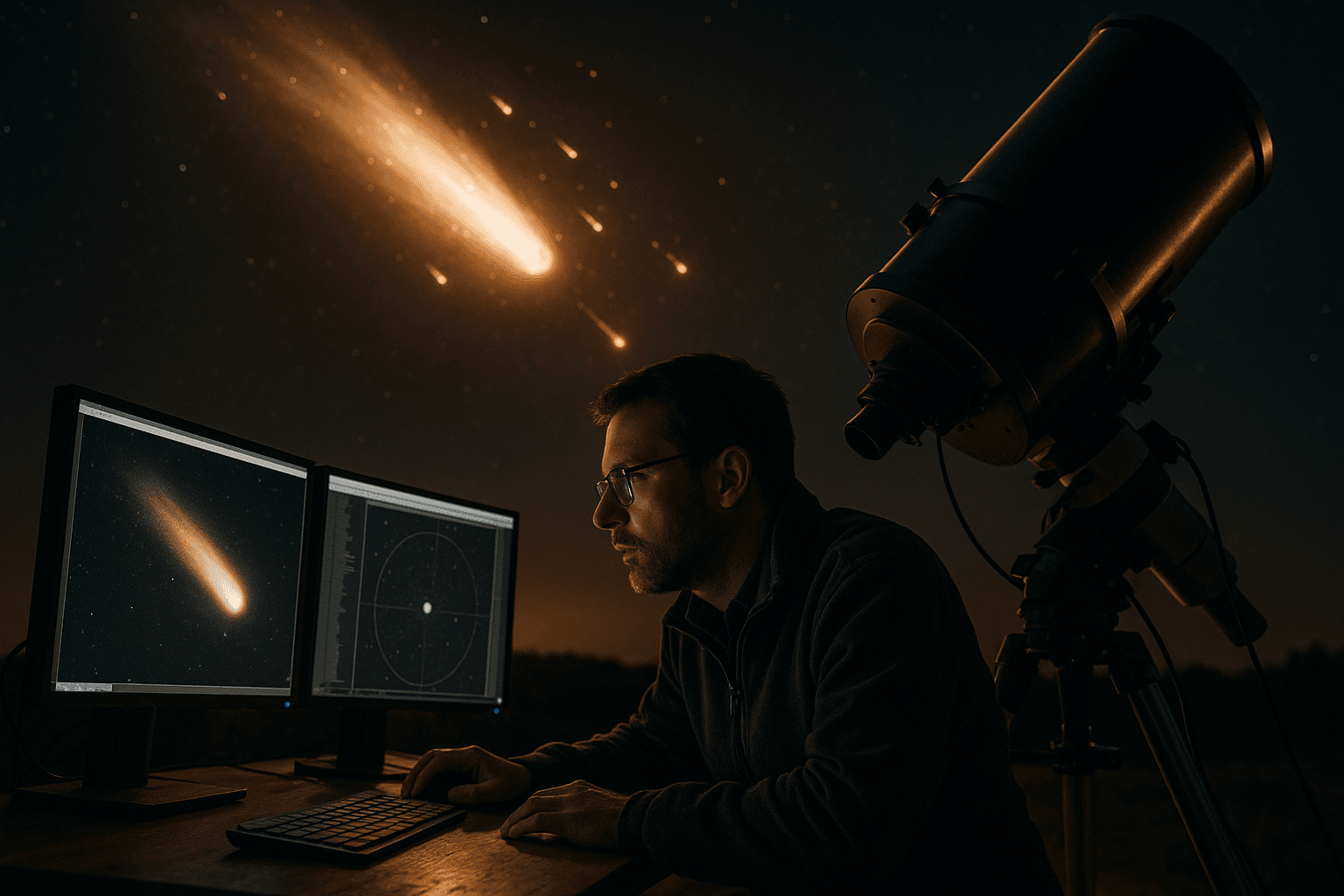Comet C/2025 K1 Fragments, Forcing Rapid Shifts in Monitoring
Space science teams are racing to track sudden brightness changes and fragmentation of comet C/2025 K1 ATLAS, issuing updated ephemerides and urgent observing requests to telescopes around the world. The fast moving event is time sensitive, offering a rare chance to probe comet interior structure, volatile composition, and dust properties before fragments disperse.

Teams at observatories and survey programs are monitoring abrupt changes in brightness and the appearance of multiple fragments from comet C/2025 K1 ATLAS on November 25, 2025. In response to the evolving situation, mission planners and ground teams are issuing updated ephemerides and urgent observing requests to telescopes worldwide so that photometric and spectroscopic measurements can be taken while fragments remain compact enough to yield clear signals.
Observers are coordinating photometric and spectroscopic observations to measure how dust and gas production are changing as the nucleus breaks apart. Photometry will track light curves and scattering behavior to estimate dust production rates and infer grain size distribution. Spectroscopy will search for volatile species released by the fresh surfaces exposed during fragmentation and will help separate gas emission from sunlight reflected by dust. Together these measurements can constrain the physical structure of the nucleus and the inventory of volatiles stored beneath the comet surface.
The response is being treated as time sensitive because fragments can disperse and fade on short timescales, eroding the diagnostic signals researchers need. Updated ephemerides aim to keep narrow field instruments accurately pointed, and rapid scheduling adjustments are being sought at facilities with queue operations or flexible time allocation. Space and ground assets are being asked to prioritize repeated observations so that the evolution of each fragment can be followed over hours and days rather than weeks.
Scientists say that fast follow up on fragmentation events yields insights into the mechanical strength and layering of comet nuclei, and into how comets release material as they approach the Sun. Those insights feed models of comet formation and evolution, and improve interpretation of the small body population in the solar system. The changing dust grain size distribution revealed during break up also influences how cometary material interacts with the inner solar system environment, including light scattering and the potential delivery of organics to planetary surfaces.

The fragmentation of C/2025 K1 ATLAS is also prompting adjustments in how near Earth object and comet monitoring is organized. The event highlights the value of near real time data sharing, dynamic scheduling and automated alert systems that can redirect observing resources quickly when an object behaves unpredictably. Coordination between survey teams, classical observatories and orbital platforms has become more routine in the past decade, and the current effort reflects that shift toward a more responsive monitoring network.
For the public, the event is a reminder that comets are active, changing worlds rather than static points of light. For scientists, the unfolding break up of C/2025 K1 ATLAS offers a narrow window to study fresh material from the interior of a comet, before the fragments disperse and the clues they carry are lost to space.


